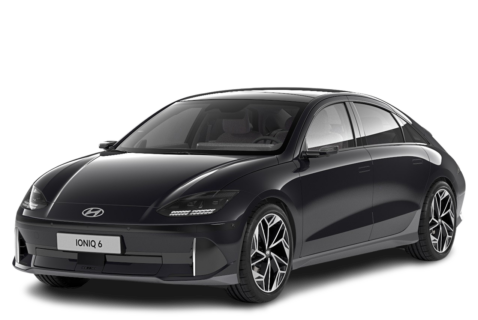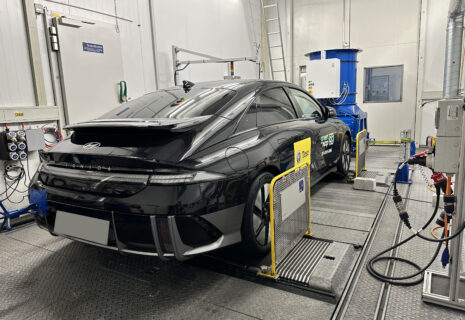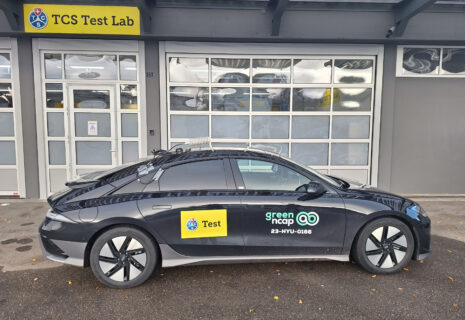Hyundai IONIQ 6 First Edition electric AWD automatic
2024
98%
10.0
10
Clean Air Index
9.6
10
Energy Efficiency Index
9.8
10
Greenhouse Gas Index
| Laboratory Tests | NMHC | NOX | NH3 | CO | PN | |
|---|---|---|---|---|---|---|
| 10.010 | Cold Test | |||||
| 10.010 | Warm Test | |||||
| 10.010 | Highway | |||||
| 10.010 | Cold Ambient Test | |||||
| Road Test | ||||||
| 10.010 | On-Road Drive | |||||
| 5.05 | On-Road Short Trip | |||||
| 8.08 | On-Road Heavy Load | |||||
| 5.05 | On-Road Light Load | |||||
| 2.02 | Congestion | |||||
| Laboratory Tests | Energy | |||
|---|---|---|---|---|
| 10.010 | Cold Test | 16.7kWh100 km | ||
| 10.010 | Warm Test | 16.3kWh100 km | ||
| 9.510 | Highway | 23.5kWh100 km | ||
| 8.910 | Cold Ambient Test | 27.6kWh100 km | ||
| Consumption | Driving Range | |||
| Average | 18.8kWh100 km | 461km | ||
| Worst-Case | 27.6kWh100 km | 306km | ||
| Greenhouse Gases | CO2 | N2O | CH4 | |
|---|---|---|---|---|
| 10.010 | Cold Test | |||
| 10.010 | Warm Test | |||
| 10.010 | Highway | |||
| 9.410 | Cold Ambient Test |
Specifications
- Tested Car KMHM541C1PA01XXXX
- Publication Date 02 2024
- Vehicle Class Large Family Car
- Emissions Class Euro 6 AX
- Tyres 225/55 R18
- Mass 2,078 kg
- System Power/Torque 239 kW/605 Nm
- Declared Battery Capacity 77.4 kWh
- Declared Driving Range Overall 583 km City 745 km
- Declared Consumption 15.1 kWh/100 km
- Heating Concept Waste heat & PTC & Heat pump








































































































































Our verdict
The Hyundai IONIQ 6 is a mid-range electric car based on the Hyundai Electric-Global Modular Platform (E-GMP). It is a 4-door saloon with 5 seats with an empty mass of 2,078 kg and a declared usable battery capacity of 77.4 kWh. The 239 kW powertrain with 2 motors is the same as the Kia EV6 AWD. Although the vehicle is heavy, the good efficiency values can be attributed to an aerodynamic body design, efficient powertrain and well managed heating system, using a combination of a PTC-heater, heat pump and waste heat utilisation. In combination with the low consumption figures, the large battery allows for ranges of around 500 km under real world conditions and 360 km in dynamic Highway driving. As a worst case, a range of 306 km is calculated based on the consumption measured in a single short drive at -7°C without intermediate charging and with fast cabin heat-up and a comfortable cabin temperature. In reality, a single long drive would exceed this range as the cabin temperature would need to be warmed from -7°C only once. Using 11 kW AC charging, Green NCAP determined an available battery capacity of 75.2 kWh, while 84.5 kWh needs to come from the electricity grid for a full recharge. This results in a creditable but fairly typical grid-to-battery output efficiency of 89%. Overall, the IONIQ 6 shines with an Average Score of 98% and gets the well-deserved 5 Green Stars.